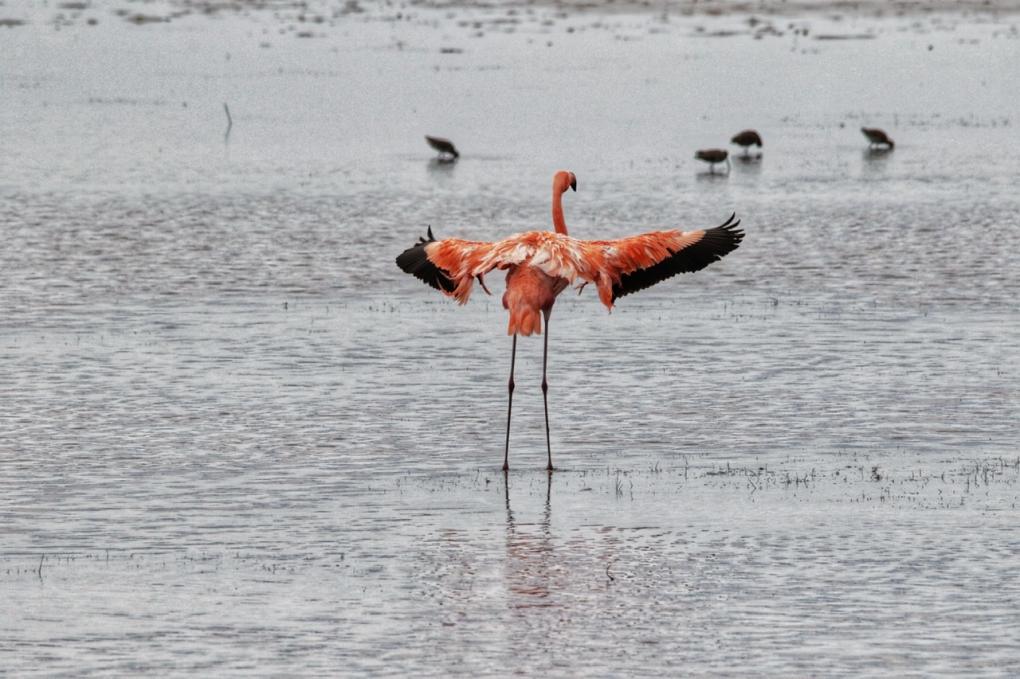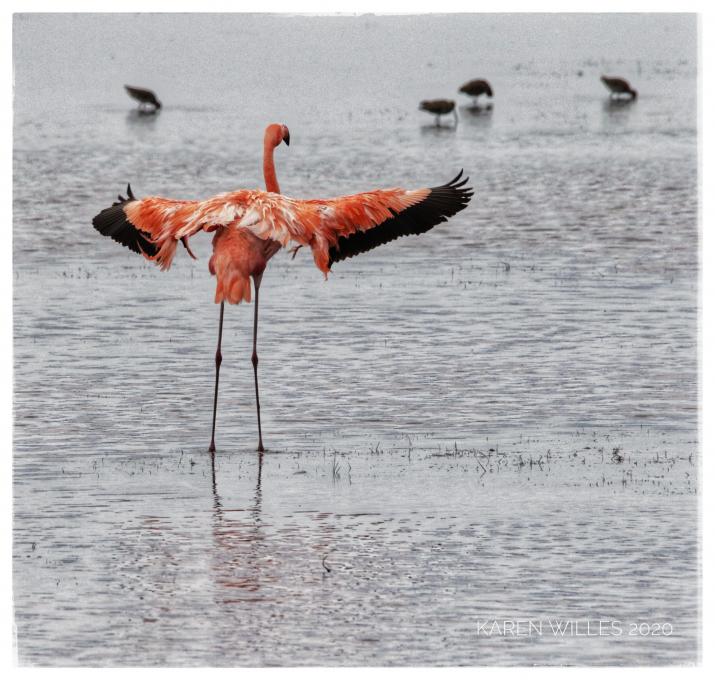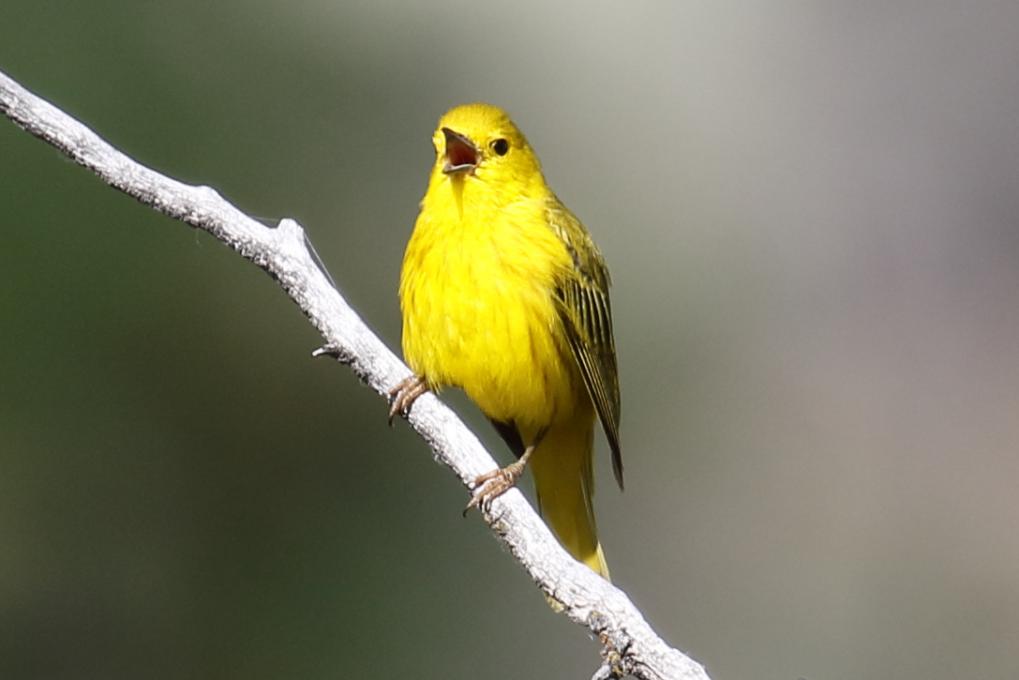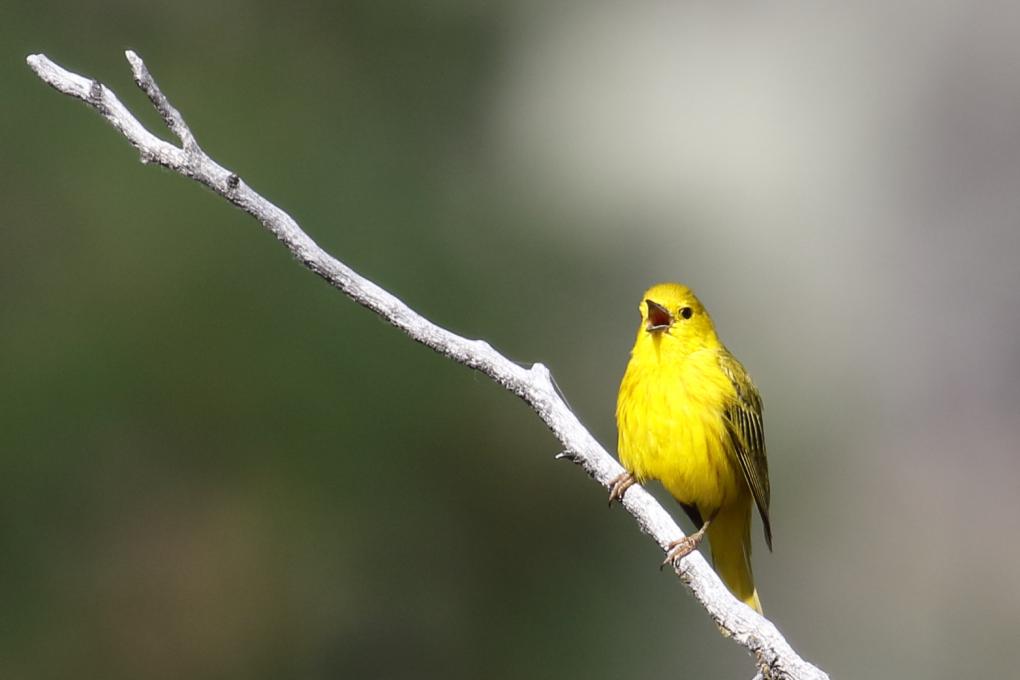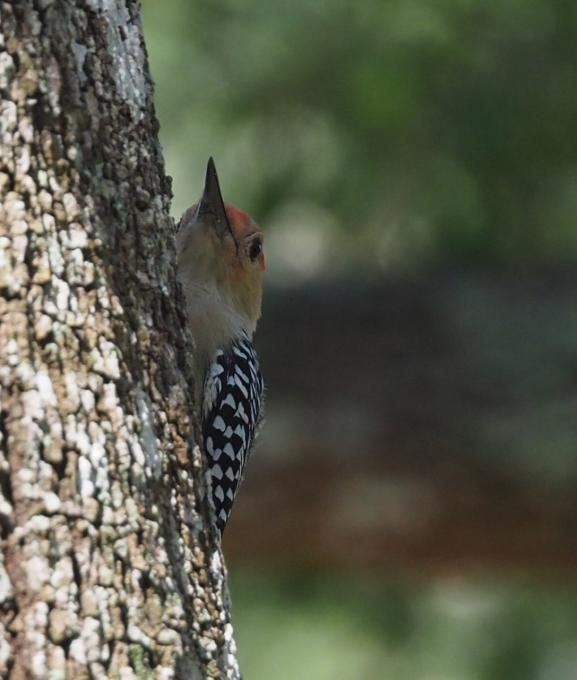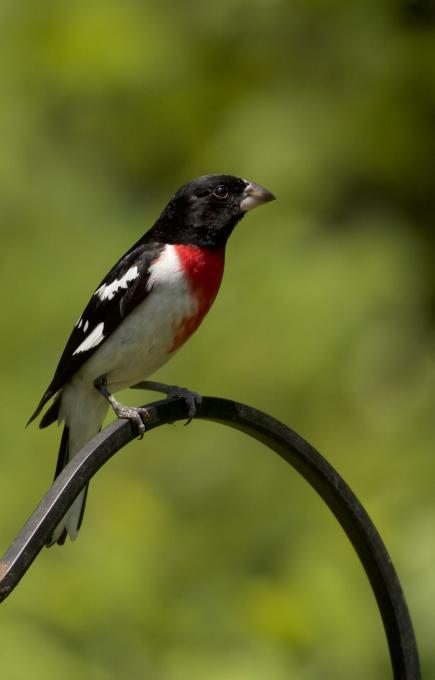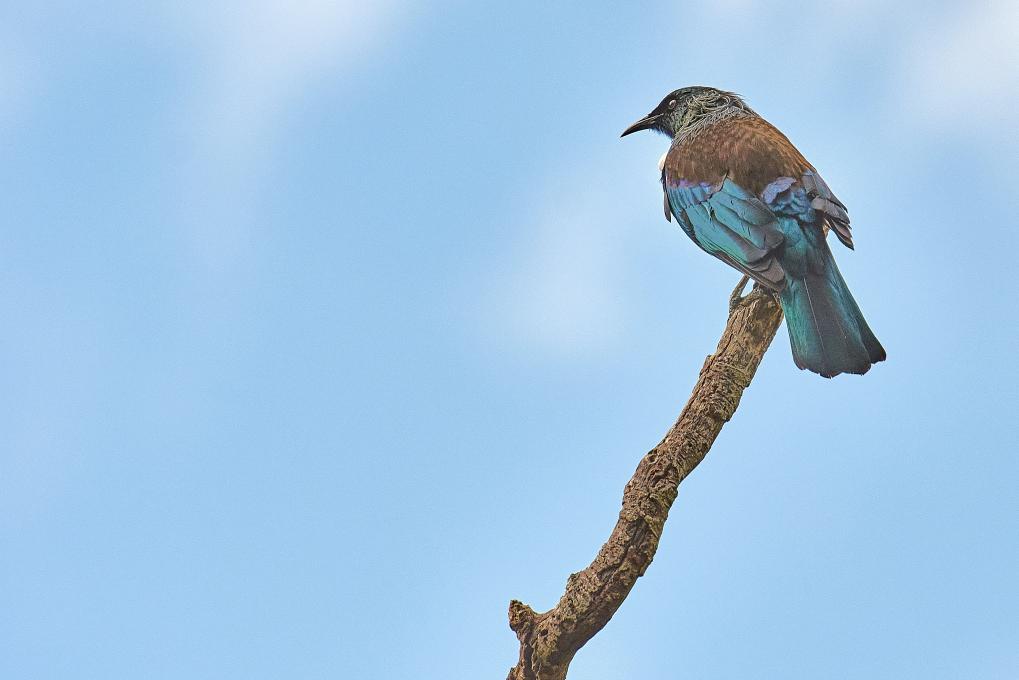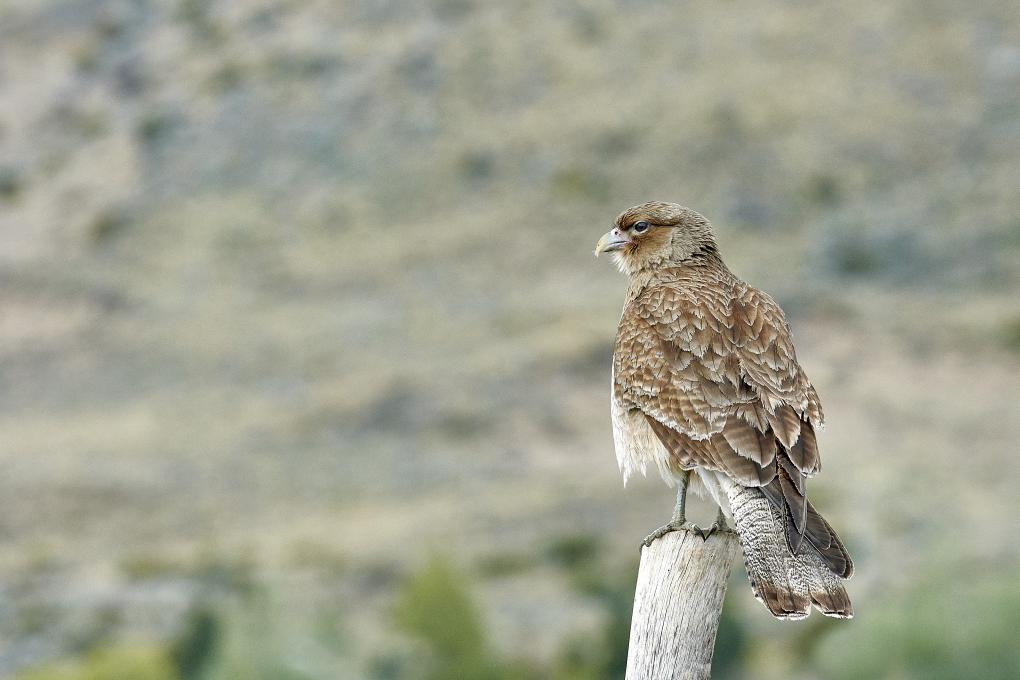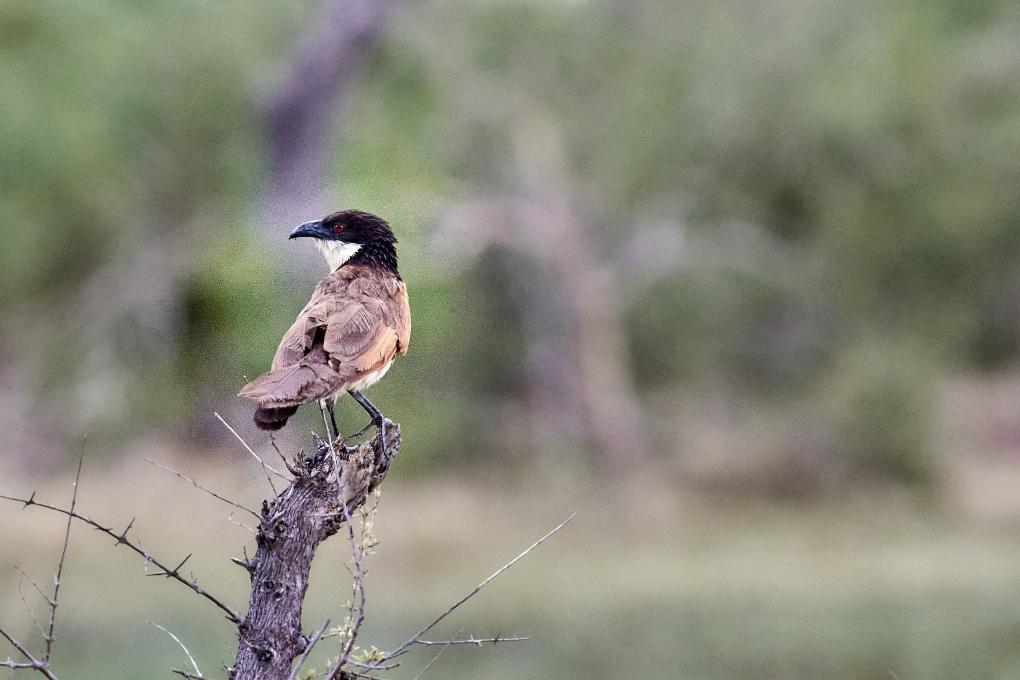The Cornell Lab Bird Academy › Discussion Groups › Bird Photography with Melissa Groo › Practice Crafting Great Bird Photos
-
Here are original and cropped images of the only time in 3 hours of waiting that this American Flamingo at St. Marks NWR in Florida opened its wings. I was glad to be able to create the final image using the Rule of Thirds and was also pleased that the shorebirds in the background did not distract from the flamingo. ISO 1250, f/10, 1/4000 / Canon 7D II, Sigma 150-600 Contemporary Lens


-
Wow! The colors (and the bird) are beautiful!
-
-
In this case when I shot this Yellow Warbler and used the thirds rule, there were pros and cons. The pro is that I could see the tip of the branch, which created nice balance and closure. However, the bird is a bit small in the field. So I decided to break the rule and center the bird. Ideally, I could have negotiated with the warbler and got him to move up the branch a bit. That wasn’t happening though! :-).


-
Very interesting. I think I prefer the second picture, even if the bird is smaller my eyes tend to follow the branch and land more easily on the bird. Well done!
-
Lovely photos. I think I agree with Isabelle. I like the whole of the branch in the frame. More pleasing to the eye. 😊
-
Light made that yellow color pop, and I agree...like second photo with entire branch.
-
-

-
Talk about missing a shot! I got the settings right but the autofocus on my camera has lots to be desired.

-
Yes, I know your sentiment and I tell myself, keep practicing! Don't give up...you'll get the shot you want and in focus. I noticed Melissa said to turn off image stabilization when photographing flying birds, so will add that to my checklist.
-
-
One of the things I really enjoy is photographing the birds that come to my backyard. Sometimes they get close enough for a nice portrait without worrying about the "rules". But they are just guidelines.


-
Beautiful!
-
-
I try to follow the "rules" especially rule of thirds as I find it creates a more pleasing photo. But I am perfectly happy to break rules - sometimes it works for the particular image and sometimes, it is all one can achieve especially when shooting fast moving animals or birds. I also prefer to give my subjects more room in front to move into but if I don't have time to compose that way, I am comfortable so long as there is some room in front of the subject. My preference is to shoot at f/5.6 or larger apertures to create an out-of-focus background but again, for fast moving birds or animals I will use f/8 or f/11 to ensure the subject stays in focus. The photos, of the Frogmouth and Chimango Caracara, are all examples of nicely blurred backgrounds. The Tui illustrates a common background when shooting birds - featureless blue sky and also is an example of shooting upward in lieu of at eye level - fairly common as birds roost in high places.



-
Excellent photos! Your explanation is really interesting. I'd love to see a frogmouth, I found them fascinating as they can blend in the tree trunks. The two other birds are beautiful too.
-
@Isabelle Great photos, I like how you composed so that the Frogmouth and Chimango Caracara are looking back at the viewer. A nice style.
-
Thanks for sharing these beautiful birds and your shooting techniques.
-
I never knew of a frogmouth before today! Amazing! Great info about your photos, thanks.
-
-
Regarding crafting great bird photos in general. Making camera adjustments such as exposure compensation, ISO, aperture or shutter speed. Please elaborate a little regarding the possibility of missing a shot while making a camera adjustment (one possibility would be to have two cameras available)and the possibility to make adjustments post production using editing software.
-
We will always miss shots. My suggestion is take the photo anyway even if you don't have your settings exactly as you would prefer. I find I learn more from what didn't work as I do from what does. Some of my favorite photos are the ones I have taken that if I overthought it I would never have pressed the shutter - shutter speed too slow, wrong zoom, ISO too high or low, etc. Here's an example of a Coppery Tailed Coucal where I pushed my camera and my ability to handhold; the background is too noisy for my liking, but overall, the image works. ISO 6400, f/5, 1/250 s, 280 mm. I also broke the "rule" which says to have more space in front of the bird than behind it. Sometimes, there is no time to compose.

-
@Fred Nice shot! I don't mind the background being a bit noisy — it sort of adds a certain arty texture. Yes I agree about the possibility of missing a shot while making exposure adjustments! I've got into a panic on numerous occasions trying to quickly change settings to accomodate a different bird or lighting situation. Those precious seconds. Microseconds!
-
Read More:
